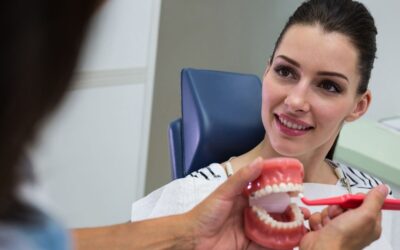After undergoing wisdom tooth extraction, the journey to recovery begins. During this time, patients often wonder about what foods they can safely consume to make the process easier and more comfortable. A common treat that many crave is ice cream. The cool, soothing nature of ice cream makes it seem like an ideal comfort food after dental surgery. However, there’s a question many have: How soon can I eat ice cream after wisdom tooth extraction?
In this guide, we will walk you through the necessary precautions, when it is safe to eat ice cream, and provide tips for managing your post-surgery diet. It’s important to understand the healing process and the potential effects certain foods may have on it. So, let’s dive deeper into everything you need to know about eating ice cream and other foods after wisdom tooth extraction.
Understanding the Healing Process After Wisdom Tooth Removal
The first step to understanding when it’s safe to eat ice cream post-surgery is to know the recovery timeline after wisdom tooth extraction. After the procedure, your body is going through a natural healing process, and it’s crucial not to rush this phase.
The First 24 Hours
The first 24 hours after your extraction are critical. During this time, there is bleeding and the formation of a blood clot in the socket where the tooth was removed. Disrupting this clot can result in complications such as dry socket, a painful condition that can significantly delay your recovery.
48 to 72 Hours Post-Surgery
After the initial 24 hours, swelling and discomfort may persist, but the clot has usually begun to stabilize. This is the time when many patients start considering soft foods, such as ice cream, but there are still risks to consider.
Beyond 72 Hours
By this time, most of the swelling and pain should start to subside. You are generally safer to introduce more food options, including ice cream. However, you still need to exercise caution with the temperature and consistency of the ice cream you consume.
When Can You Safely Eat Ice Cream After Wisdom Tooth Extraction?
First 24-48 Hours: No Ice Cream Yet
Why Ice Cream is Not Recommended Initially
While the coolness of ice cream might seem comforting, it’s important to avoid eating it during the first 24 to 48 hours after surgery. Immediately after your wisdom teeth are removed, the area is highly sensitive and healing, and anything too cold or too hot could irritate the sensitive gums and the wound. Moreover, there’s a risk of dislodging the blood clot if you consume anything that requires sucking or excessive swallowing.
Primary Focus During the First Two Days
The primary goal during the first 24-48 hours is to control bleeding and to allow the blood clot to form properly. To prevent complications, your diet should focus on clear liquids like water and broths, and soft foods like yogurt. Even ice cream during this period may risk irritation, as the cold can cause discomfort and potential swelling.
The Safe Time to Eat Ice Cream: After 48 Hours
Reducing Swelling and Soothing the Pain
After 48 hours, you can begin introducing cold foods, and ice cream can be a soothing treat. The coldness of the ice cream may help reduce swelling and numb any lingering discomfort in the extraction site.
Best Practices for Eating Ice Cream
Even after the initial 48 hours, you need to make sure the ice cream you eat is plain and soft. Avoid any varieties that contain crunchy chunks, nuts, or chocolate chips, as they may get stuck in the wound and cause pain. Stick to smooth flavors like vanilla or chocolate and avoid anything with hard pieces or added toppings.
Eating in Moderation
While it’s tempting to indulge in ice cream, moderation is key. Eating too much ice cream too soon can lead to sensitivity, especially if the ice cream is too cold or if you eat it too quickly. Aim for small amounts to start, and make sure that your consumption doesn’t cause any discomfort.
What Are the Risks of Eating Ice Cream Too Soon?
Dry Socket
Dry socket is one of the most common complications that can arise from wisdom tooth extraction. It occurs when the blood clot that forms after the extraction is dislodged or dissolves prematurely. This leaves the bone and nerves exposed, which can cause severe pain and delay the healing process. Eating ice cream too soon, especially if it’s too cold or you eat it too aggressively, can increase the chances of developing dry socket.
Irritation and Sensitivity
After the first few days, the wound is still healing. Extremely cold or hot foods can irritate the sensitive area, causing prolonged discomfort or even bleeding. Ice cream that is too cold can also cause a sensitivity flare-up, resulting in more pain during the recovery process.
What to Eat After Wisdom Tooth Extraction?
Soft Foods to Consider
Eating the right foods during the recovery period is vital for both comfort and healing. Here are some soft foods that are generally safe to consume:
-
Yogurt and Smoothies
These soft, cool options can be soothing while providing necessary nutrients. Smoothies are great because you can blend in various fruits, protein, and even greens for a balanced diet. -
Pudding and Custards
Like ice cream, these are soft, cool foods that won’t irritate the extraction site. Custards and puddings also offer a variety of flavors for you to enjoy while maintaining comfort. -
Mashed Potatoes and Soups
Mashed potatoes and soups are excellent during the first few days as they are soft and easy to eat. Opt for mild, non-spicy soups to avoid irritating the wound. -
Oatmeal and Cream of Wheat
These are other soft, warm foods that are easy on the gums, though you should avoid anything too hot during the early days of recovery.
Foods to Avoid
-
Crunchy or Hard Foods
Avoid crunchy foods like chips, popcorn, and nuts, as they can cause pain or disrupt the healing process. Hard fruits and vegetables, like raw carrots, should also be avoided. -
Spicy or Acidic Foods
Spicy foods, citrus, and tomatoes can irritate the extraction site. It’s important to stick to bland, non-acidic foods to avoid inflammation or discomfort. -
Alcohol
While not a food, alcohol can interfere with your healing process. It can interact with pain medications, increase swelling, and potentially slow down the recovery period.
FAQ’s
1. Can I eat ice cream immediately after wisdom tooth removal?
No, it’s important to wait at least 48 hours before eating ice cream. The blood clot needs time to form, and premature consumption of cold foods may disrupt this process.
2. What type of ice cream is safe after wisdom tooth extraction?
Plain, smooth ice cream without any chunks or hard additions is the best choice. Avoid varieties with nuts, cookies, or chocolate chips that could irritate the wound.
3. How long should I wait before eating solid foods after wisdom tooth extraction?
You should wait 5-7 days before reintroducing solid foods. Stick to soft and easy-to-eat options during the first few days for optimal healing.
4. Is it okay to drink cold beverages after wisdom tooth extraction?
Yes, cold beverages can soothe the area, but avoid using a straw. The suction from drinking through a straw can dislodge the blood clot and cause complications.
5. How can I reduce swelling and pain after wisdom tooth removal?
Apply an ice pack to the face during the first 48 hours and follow your dentist’s prescribed pain management plan to help reduce swelling and discomfort.
6. Are there any foods I should completely avoid after wisdom tooth removal?
Avoid foods that are hard, crunchy, spicy, or acidic. These can irritate the wound or cause pain during healing. Stick to soft and bland options instead.
Conclusion
Eating ice cream after wisdom tooth extraction can be a soothing treat, but timing is crucial. The first 24-48 hours are critical for healing, and you should avoid anything too cold or hard that may disrupt the blood clot or irritate the site. After this period, ice cream can be a wonderful way to reduce swelling and discomfort, but it should be consumed carefully. Always choose smooth varieties, eat in moderation, and avoid overly cold or hard pieces. By following these guidelines, you can ensure that your recovery is smooth and complication-free.



